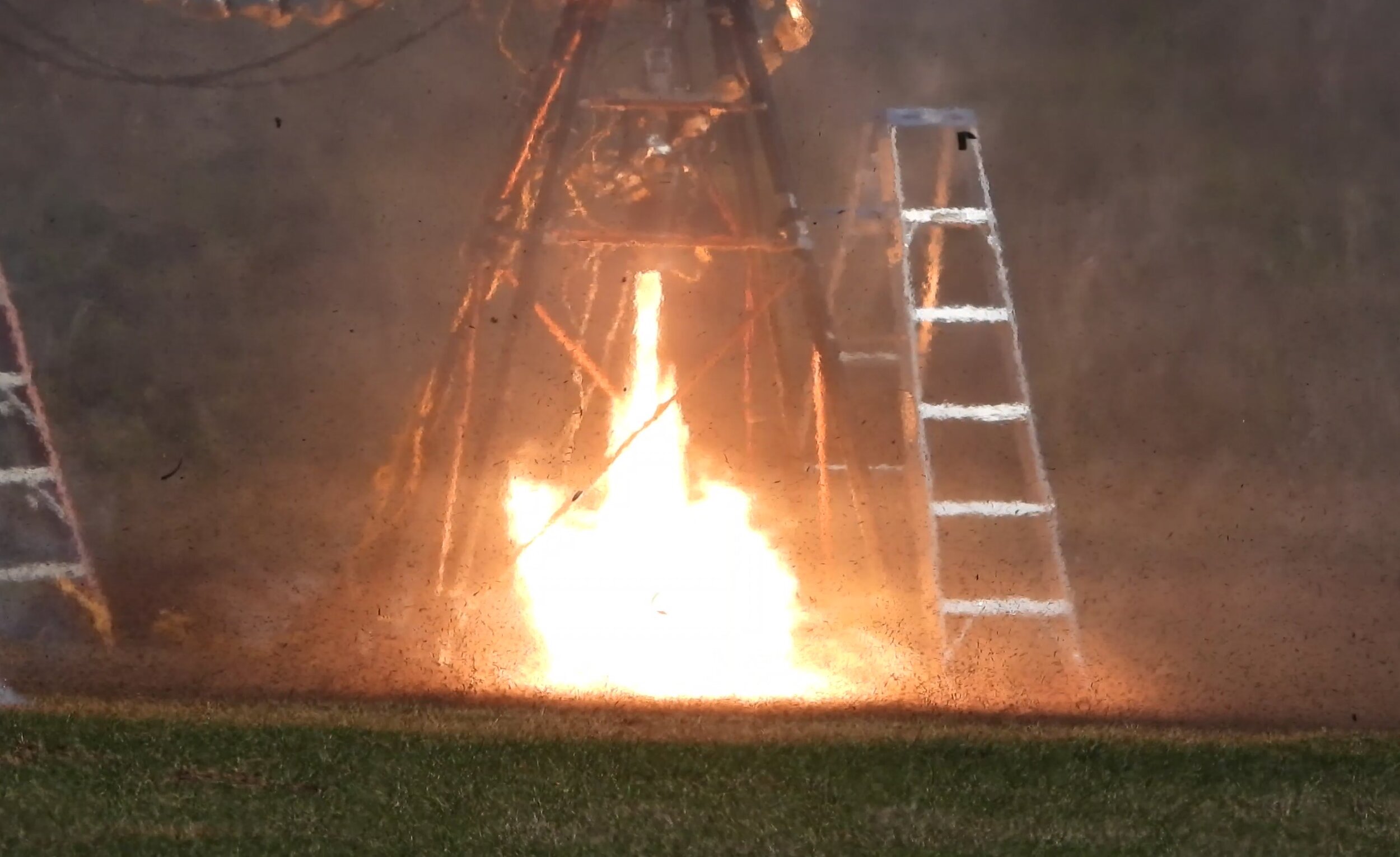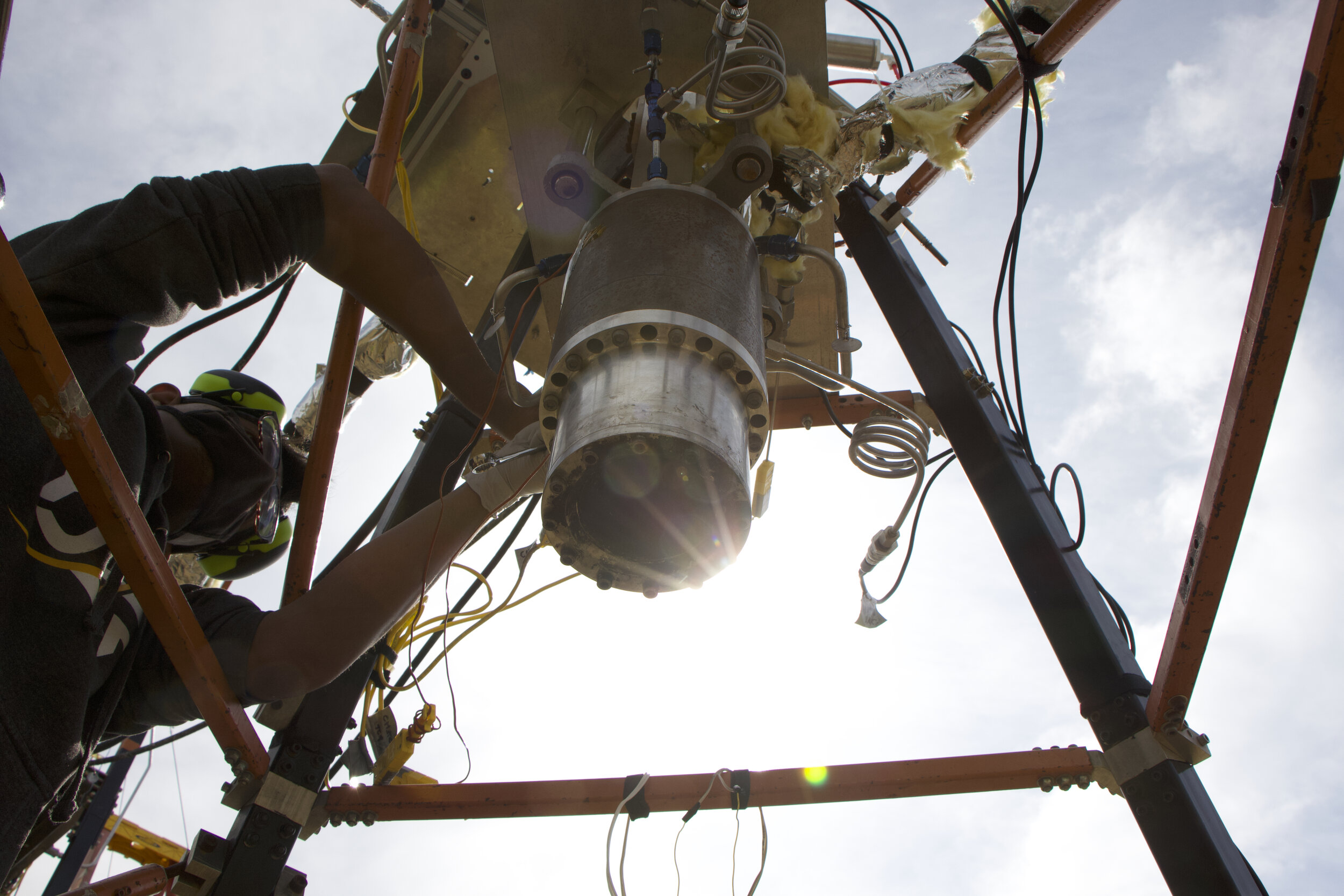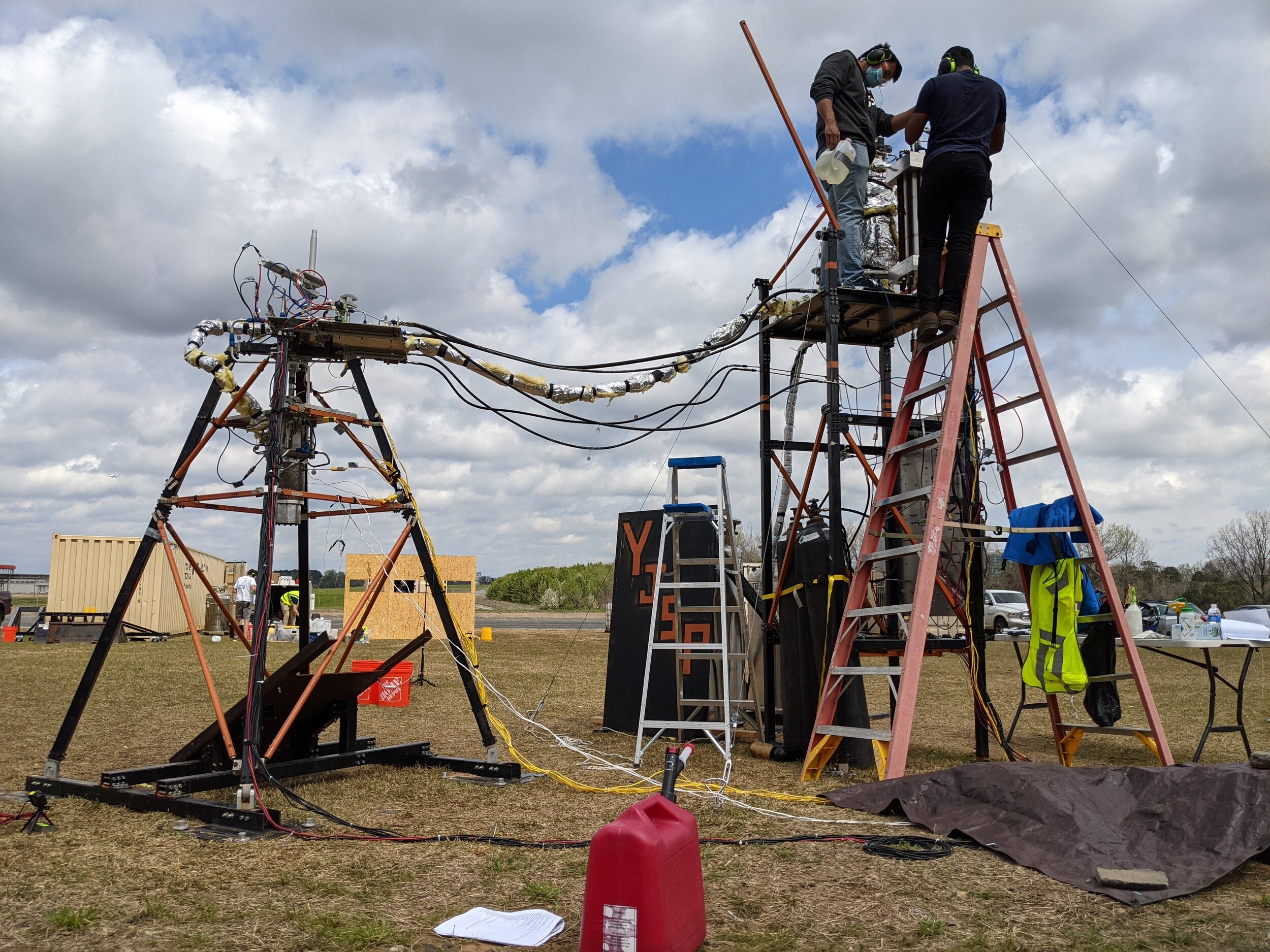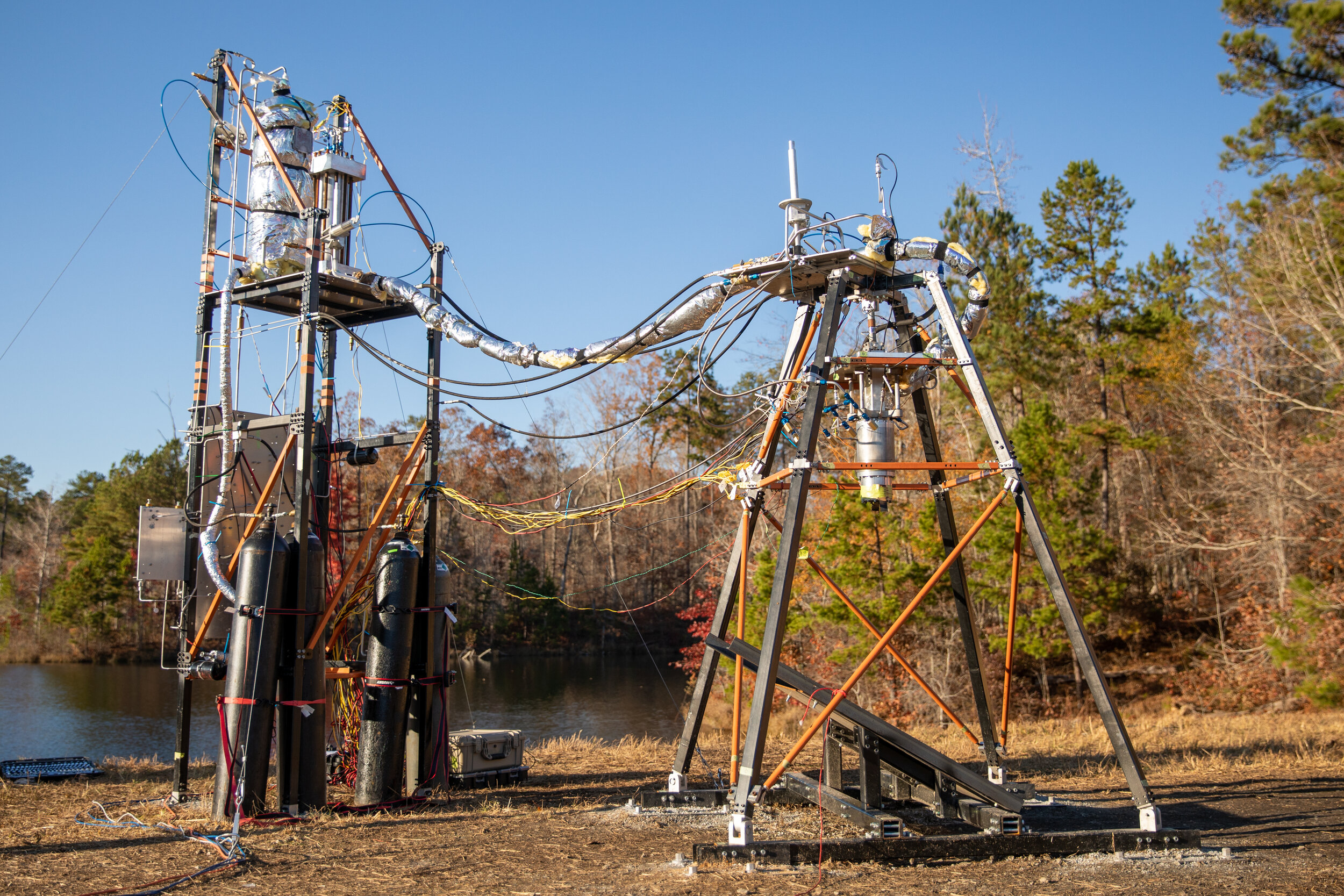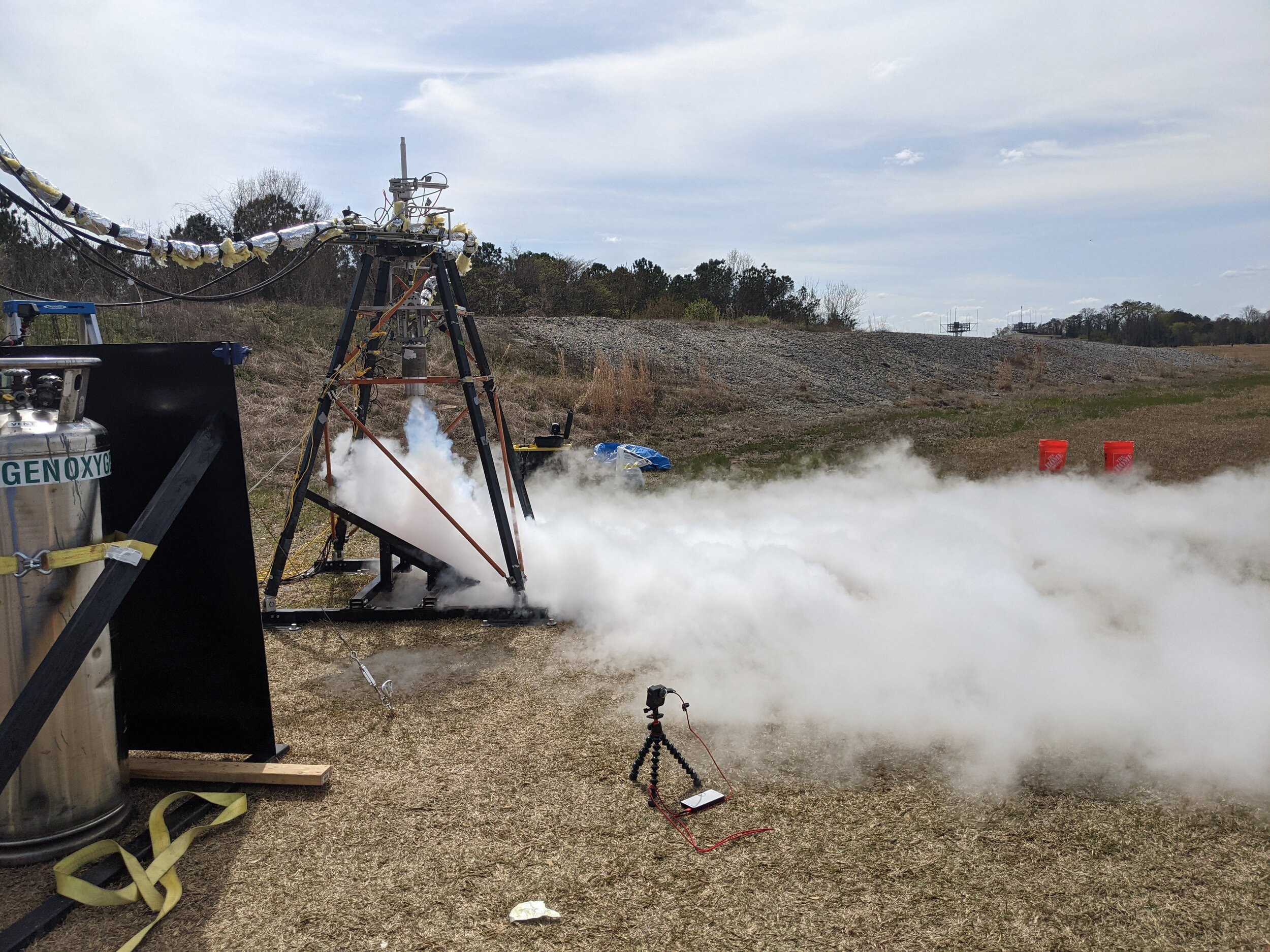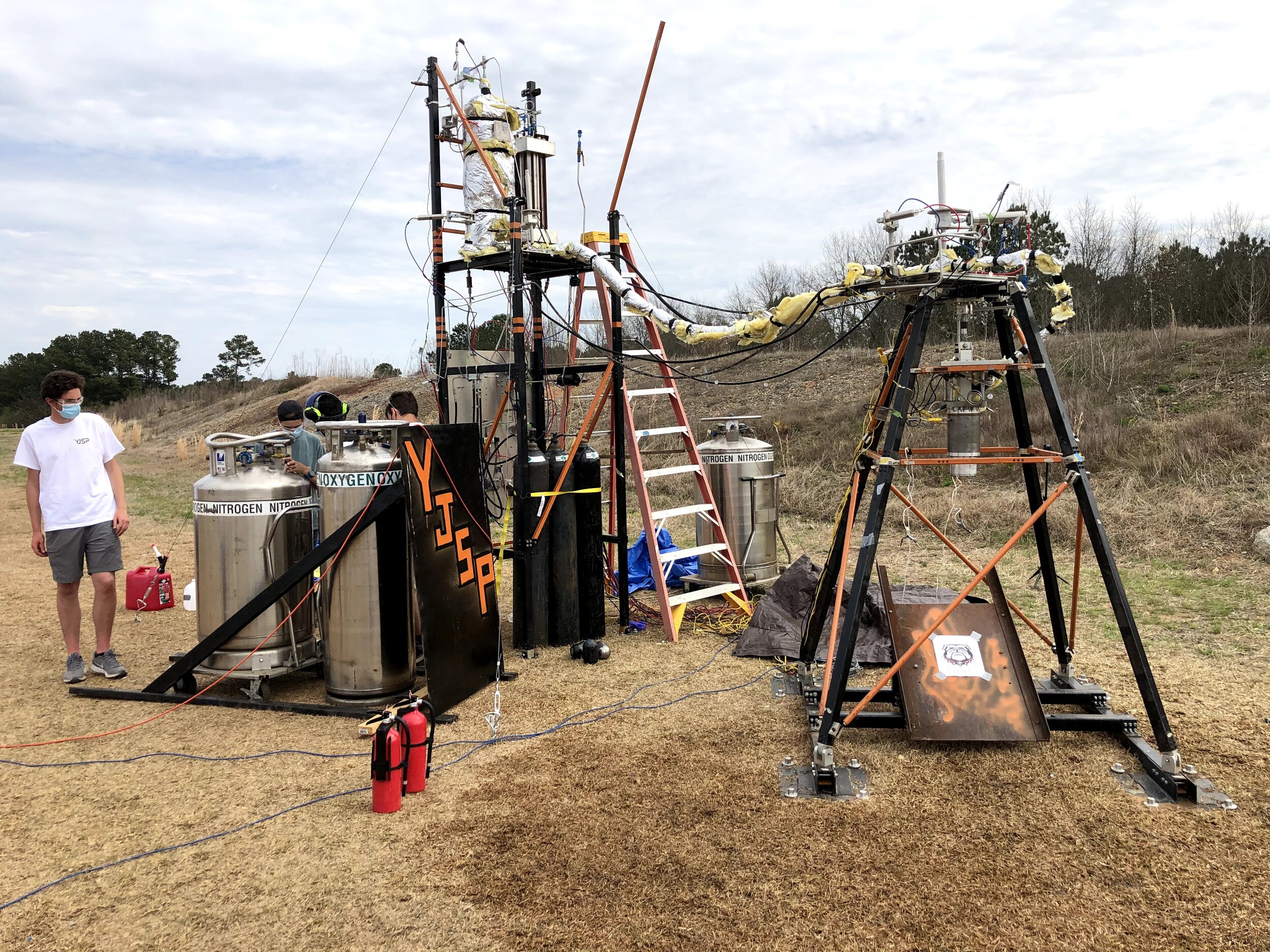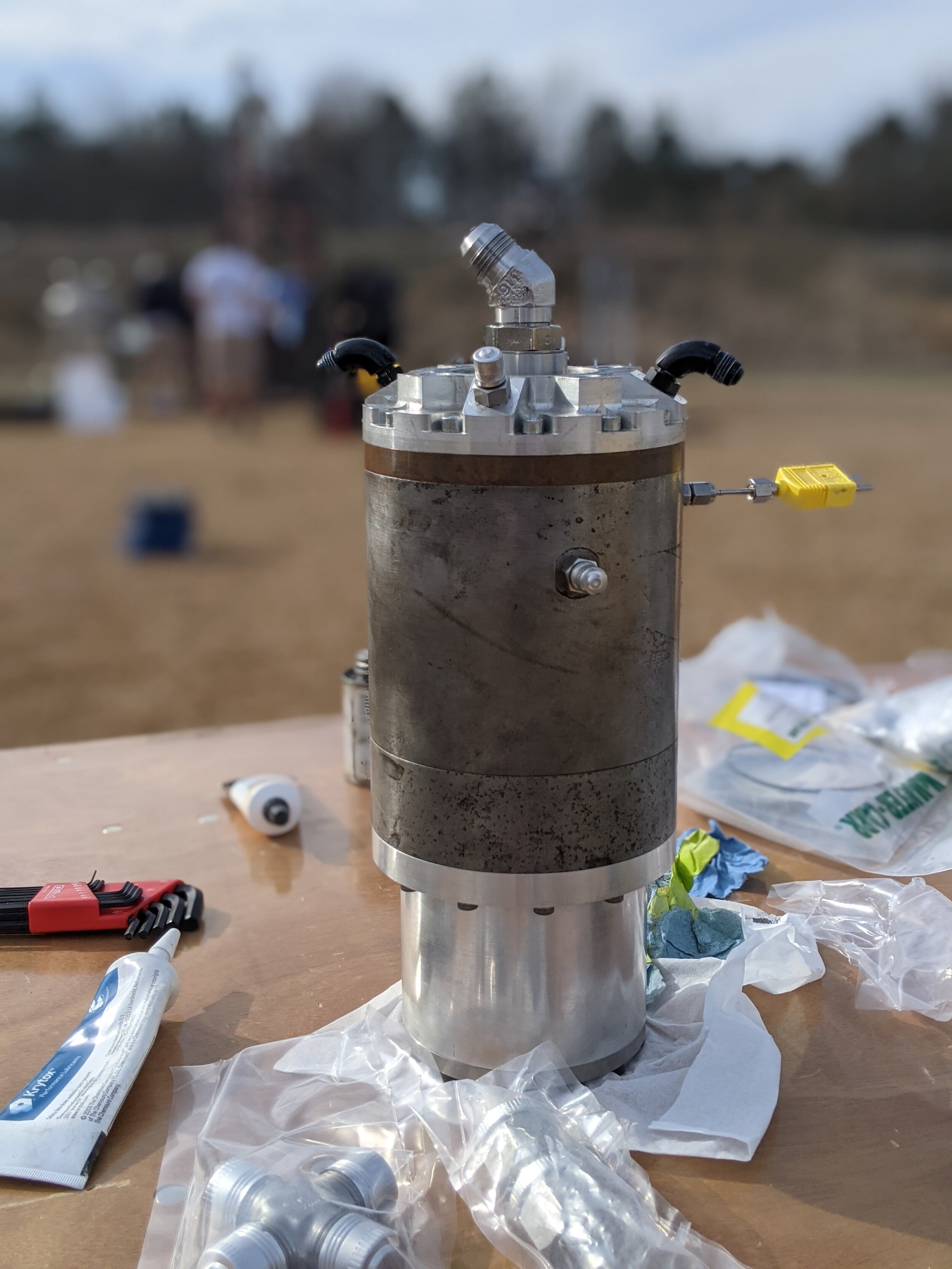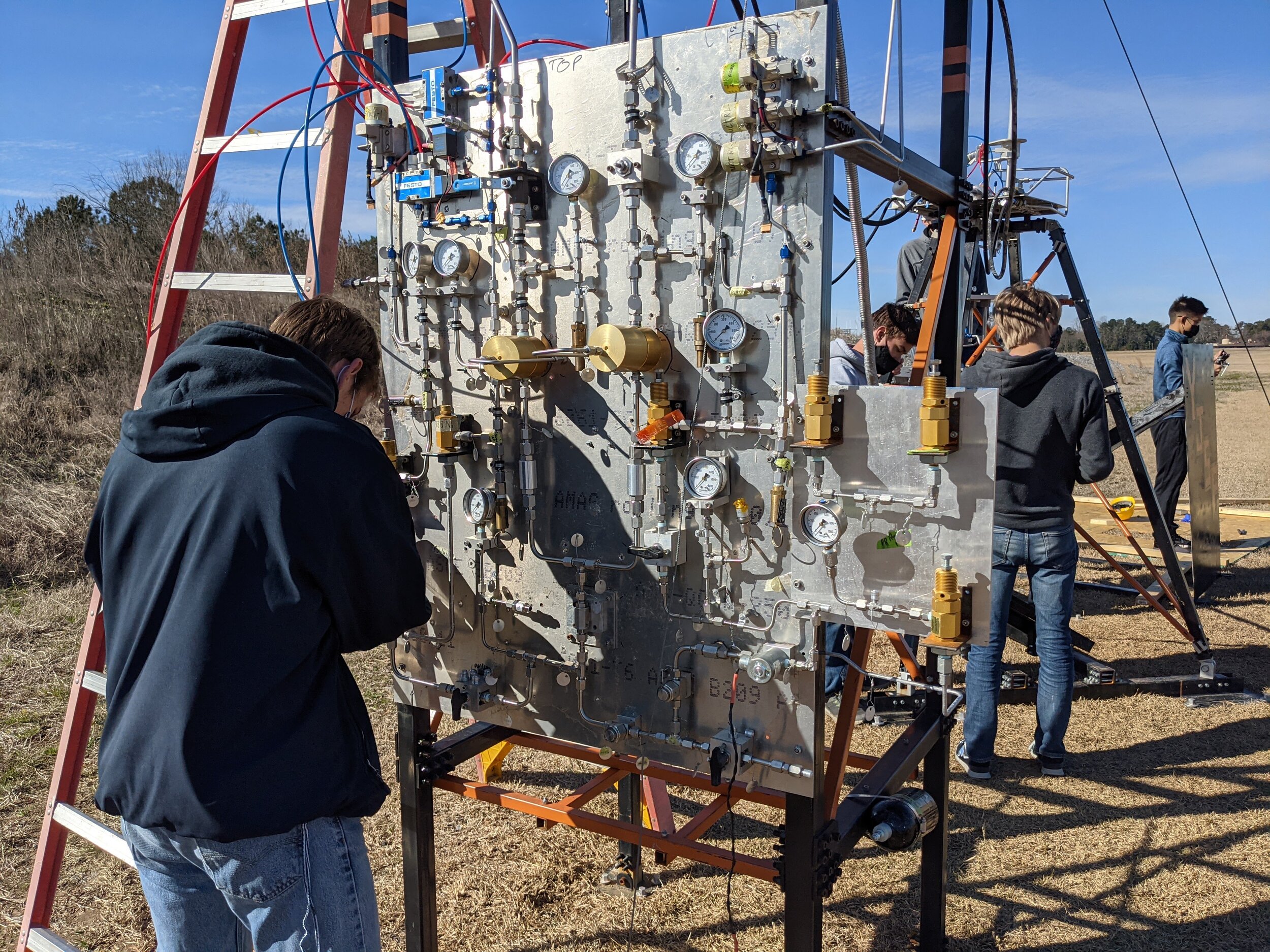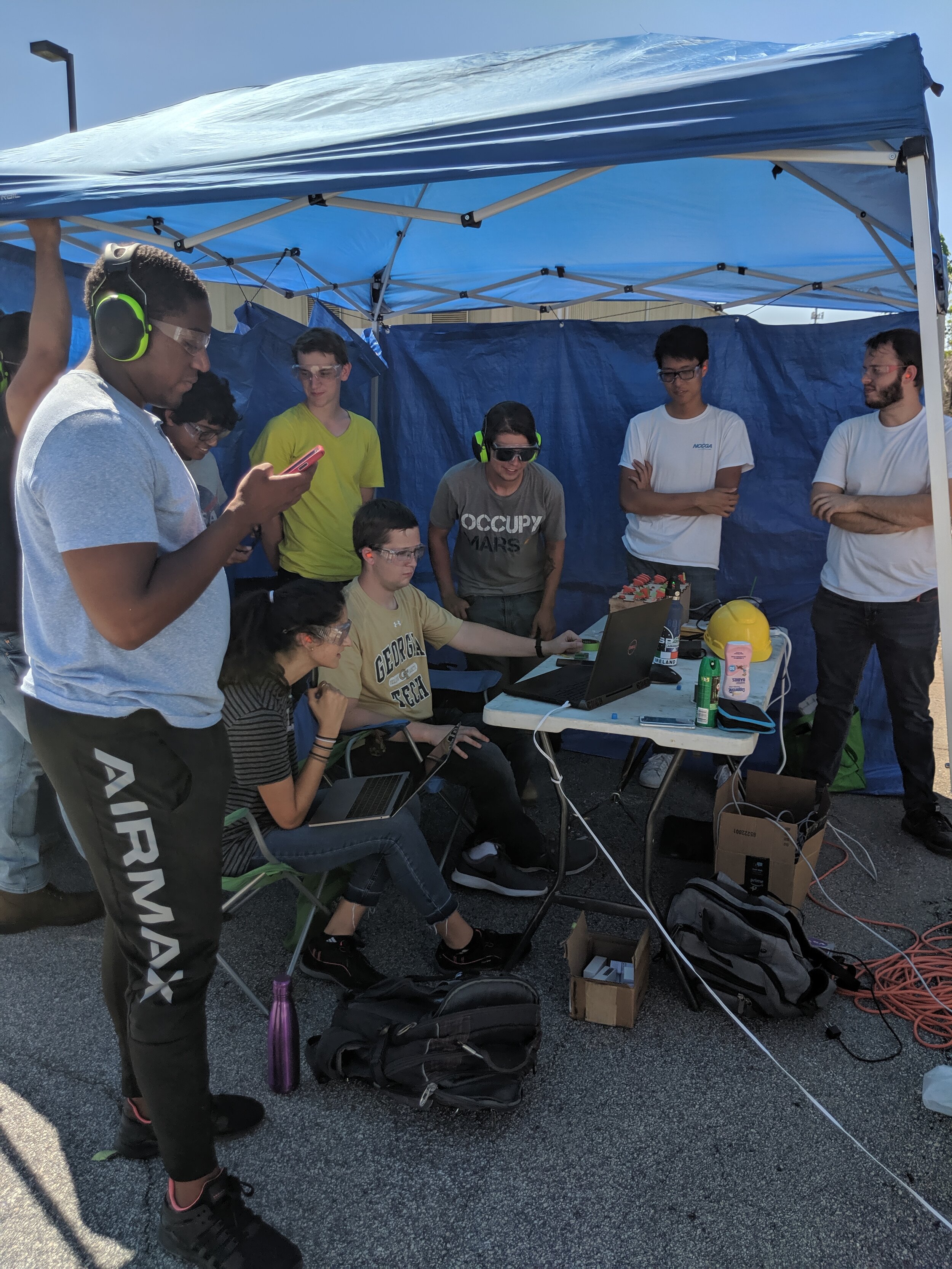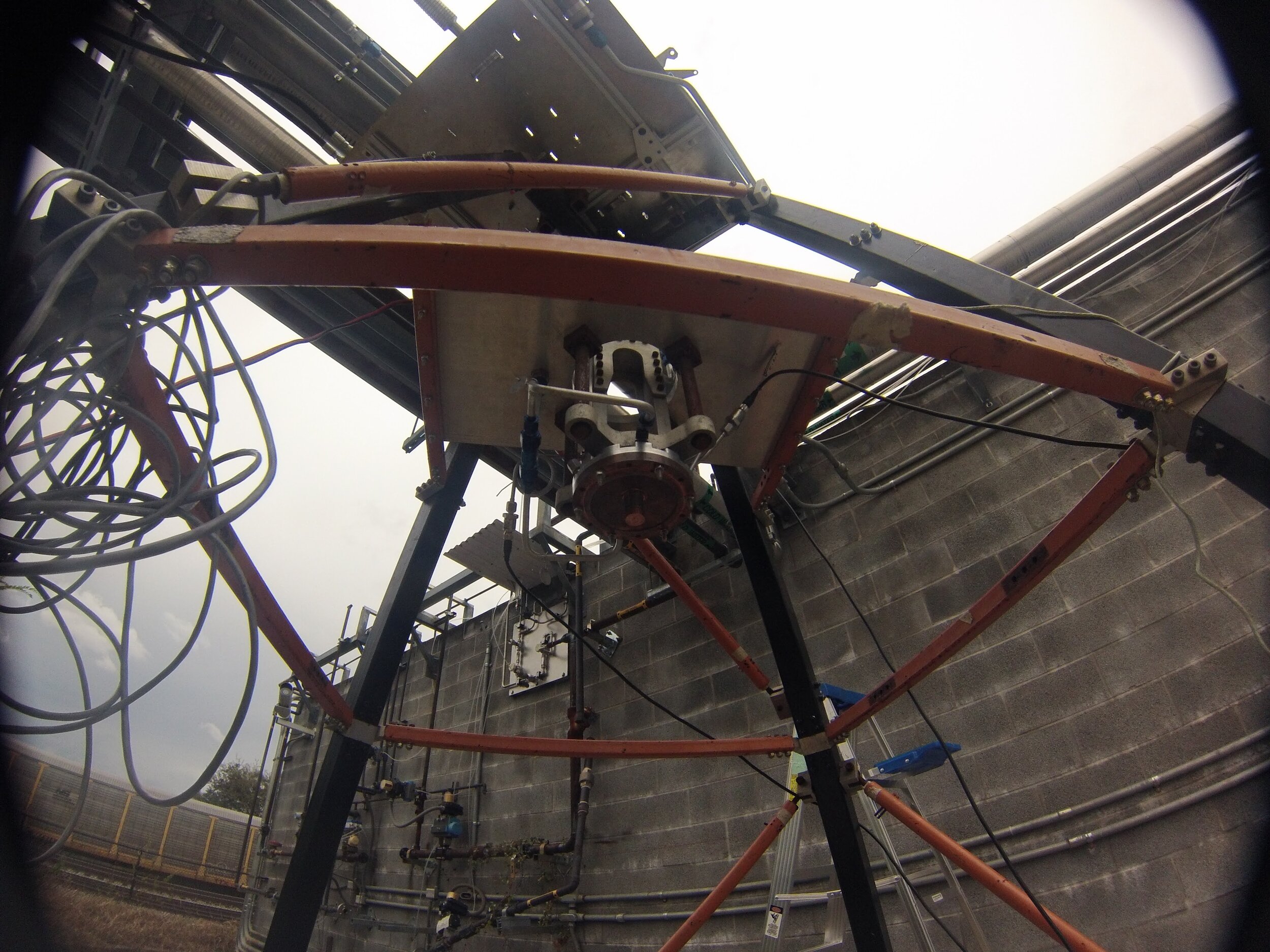ENGINE DEVELOPMENT
The Engine Dev team designs, manufactures, and tests all of YJSP’s kerosene-liquid oxygen engines, injectors, igniters and all other engine related hardware. The team also designs, builds, and operates the test stands required to hotfire 5000 lbf engines, allowing for complete characterization of engine performance prior to integrating them on our rockets. The Engine Dev team is developing three different injectors (Pintle, Coaxial Swirl, and Impinging) and three different engines (Heatsink, Ablative, and Regeneratively Cooled). The team also works on several other innovative and experimental projects, such as bangbang pressurization control and high-power electric pump for delivering propellants to the engine at high flow rates and pressures.
HELLUVA ENGINE TEST STAND
The Helluva Engine Test Stand (HETS) is designed for rapid test cadence of kerosene-liquid oxygen engines. Built in early 2024, the test stand completed 10 hotfires in the first 30 days of being operational. The entire system is mounted on top of a trailer. It is a pressure-fed system utilizing bang-bang pressurization to maintain tank pressure. The thrust structure is separately mounted to the ground with earth anchors. HETS, being a non-flight system, has several redundant valves and systems in place to be prepared for anomaly. It has dedicated CO2 fire suppression, nitrogen purge, and redundant pneumatics systems to ensure the system is always in a controllable state. Nevertheless, if control is ever lost the system returns to a safe normal state. All of the test data is routed to our mission control trailer where the team remotely operates hotfire tests from afar. All of the electronics and software are custom designed by our team, in addition to all the engines and propulsion systems designed and built by our team. The main purpose of HETS is to give students the opportunity to learn by doing actual rocket science, and to maximize learning you need data. HETS collects all types of data like thrust, pressure, temperature, and propellant flow rate. All of these things allow the team to build and test bigger and better engines for our future rockets!
Engines
YJ-1S
YJ-1S is a subscale test article and the first liquid-fueled engine developed by the YJSP team. The goal of the project is to develop a small scale, robust, and test-focused engine to enable us to rapidly test and iterate on component design. YJ-1S is made of a large mass of steel which acts as a heatsink to keep the engine chamber from melting over short duration burns. It also has an ablative graphite throat insert to prevent the steel from melting at the hottest part of the engine.
- Thrust: 3500 N
- Chamber Pressure: 18 Bar
- Isp (SL) : 244 s
- C*: 1708 m/s
- Fuel: Jet-A
- Oxidizer: LOX
- Fluid Flow Rate: 0.53 kg/s
- Oxidizer Flow Rate: 0.95 kg/s
- Oxidizer-to-Fuel Ratio: 1.8:1
Injectors
GROUND FEED SYSTEM (retired)
The Ground Feed System (GFS) is YJSP’s first engine test stand. GFS is comprised of two structures, the tank stand and the thrust structure. The tank stand holds our liquid oxygen and Jet-A tanks and has a pressure control panel on the side for operators to access. It uses a pressure-fed system with manual regulators. The thrust structure takes up the load from the engine and measures the thrust using a load cell. GFS completed its first hotfire in 2019 of the YJ-1S engine, and after 6 more hotfires the engine was sent over to the GoldiLOX team for vehicle static fires. The system was retired in 2022 in favor of HETS.









